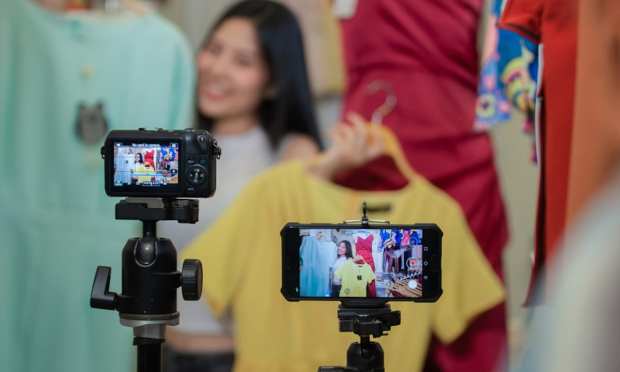Shopstreaming On The Rise In US, But Remains Aimed At Female Shoppers

Pushed by the pandemic, the first half of 2021 has seen an explosion in shoppable streaming, as retailers and brands have rushed to find a new way to reach — and sell to — home-based consumers.
“It’s basically digitizing QVC and HSN,” Deborah Weinswig, chief executive officer of Coresight Research, told Bloomberg. “It’s a huge opportunity.”
An opportunity whose size is easy to see on a global scale. Livestreamed commerce was a $60 billion industry in 2019, which is forecast by Coresight to double when the official 2020 numbers are in.
Here in the U.S., shopping the stream had previously been a small niche, bringing in less than $1 billion of the $60 billion total. But that has started to change, particularly in the last year.
Amazon’s streaming platform has expanded from its original offering at the 2018 launch to streaming daily shows on fitness, makeup and cooking. Walmart started pairing up with TikTok to host live-streamed shopping events, including a “Spring Shop-Along: Beauty Edition” featuring TikTok influencers doing 60-minute beauty tutorials, during which Walmart items could be easily purchased.
Nordstrom rolled out its own live-streaming channel this spring featuring programming like “how to wear Burberry runway looks,” happy hours devoted to spring beauty trends and interviews with industry luminaries like makeup artist Charlotte Tilbury. Each broadcast gives viewers the chance to interact and shop for the products mentioned on Nordstrom’s website.
At roughly the same time last May, Facebook added to its inaugural live-streaming efforts with the launch of its “Live Shopping Fridays” event series, which offered consumers a chance to see live-streamed beauty, skincare and fashion content on a weekly basis. Brands like Abercrombie & Fitch, Bobbi Brown, Clinique, Sephora, Dermalogica, Alleyoop and Zox.
And that’s just the biggest names in the game — there is also a host of live-streaming startups and innovators like TalkShopLive, Shopflix, Brandlive, CommentSold and NTWRK, all of which have experienced explosive growth in the last year as shoppable streaming has gained ground among homebound consumers. TalkShopLive saw sales spike about sevenfold during COVID-19 and Brandlive doubled its revenue in 2020, while CommentSold has seen a 50 percent increase in spending per viewer this year and more than a threefold jump in retailers adopting streaming.
As Coresight’s Weinswig told CNBC, retailers have every reason to leap to the streaming bandwagon. “Returns are 50 percent lower when items are bought in a livestream,” she said, citing Coresight data.
Livestreaming commerce, having now arrived in the U.S., is here to stay, as it removes friction for the retailer (in the form of those lower returns) and for the shopper, who now has the ability to ask questions and interact with the brand before clicking that buy button.
But Is It For Everyone?
Although livestreaming commerce removes friction for some shoppers, a quick look at the big launches this year — and the general tendency of shoppable streams in terms of what they sell — says a lot about who they target.
In this case, that seems to be female consumers, as most of today’s shoppable streams focus on brand areas where women outshop and outspend men by a wide margin. Beauty brands have been the most enthusiastic embracers of the shoppable stream, and although some men wear makeup, women are the overwhelming majority of customers in this segment — and brands are largely counting on them to watch and interact with streams.
And while beauty is the most obvious and extreme example, other areas of focus for streamable shopping include fashion, fitness, home goods and accessories — all areas where women are the main consumers.
Given that QVC and HSN — the televised version of shoppable streaming — have audiences that are over 70 percent female, it’s not surprising that shoppable streams are mostly pushed at women. But there are some signs that the siren song of streamed shopping is also being beamed at men, as shoppable Twitch streams are rising in prominence. Twitch hosts 91 percent of all video game streaming — and its audience is ⅔ male.
And over the last several years, Twitch streamers have become Twitch merchants to boot, promoting items directly to their large live viewing bases, with an easy path to purchase on Amazon (which owns Twitch). Twitch, and items sold there, have even become an important part of Prime Day.
This means the streams are becoming increasingly shoppable for everyone — though they might not be presented quite the same way to each customer.
